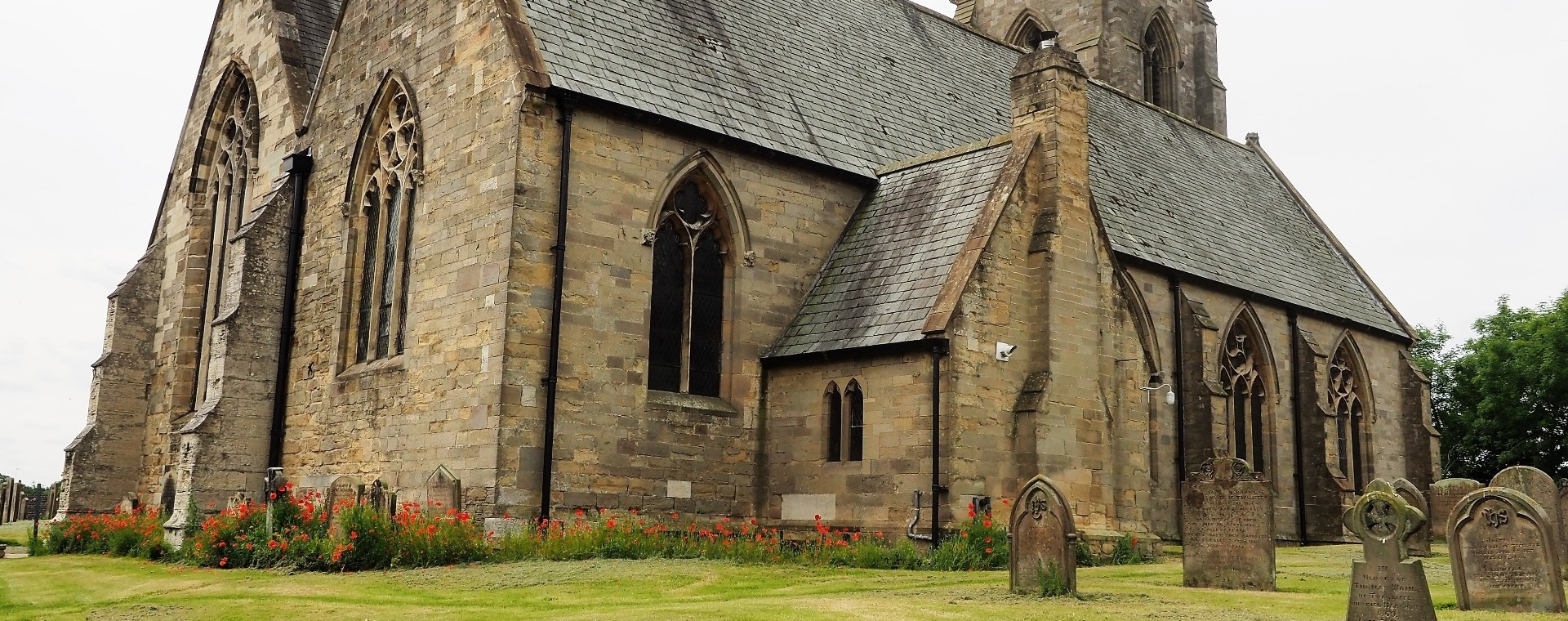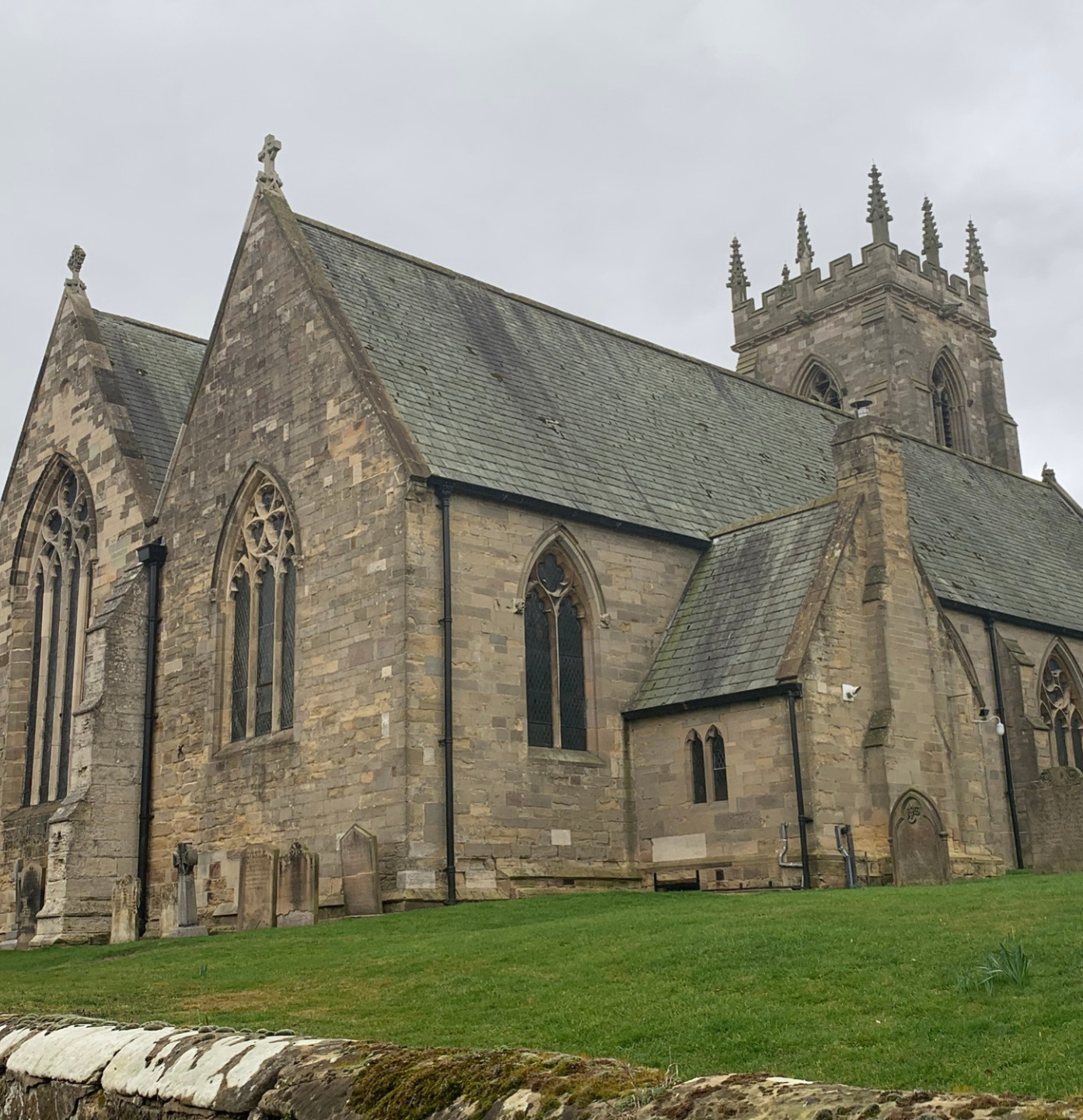
St Columba’s Parish Church
The Parish is part of the Benefice of Topcliffe, Baldersby with Dishforth, Dalton and Skipton on Swale. It is served by the Churchwardens Liz Marsh and Linda Carver, and the PCC. The Vicar has recently retired and we hope have a new incumbent as soon as possible.
Full details of the activities in the Benefice can be found by going to the websites for the other churches, through the parish magazine Cross Talk, or by looking on the noticeboard at church.
We are a small congregation that meets every week and we have a variety of services throughout the month, details of which can be found below.
History
From its dedication and its location in the north of England, the church is believed to have been founded by a disciple of St Columba, such as Aidan, Finian or Colman, during their Conversion of the North, well prior to the Danish invasion of Yorkshire in AD 794. No certain evidence exists of the pre-Conquest building - which may have been destroyed at the hands of the Danes - except possibly a Celtic wheel-head cross in the possession of the modem church thought to have belonged to a (stone?) church built here in late Saxon times.
AD 1067: William Percy, of the family eventually becoming Dukes of Northumberland, received lordship of the manor of Topcliffe. The motte and bailey of an early Percy castle (“soon after AD 1071”, says Pevsner) is clearly visible at Maiden’s Bower, about half a mile from the church, together with a later moated manor platform and its enclosure;
AD 1085-7: The Domesday survey records Topcliffe church as having two priests;
AD 1162: The church was given by the third Baron Percy to St Peter’s Cathedral in York;
AD 1258: a vicarage for a perpetual vicar was established by the Archbishop of York;
AD 1499: a chantry for St Mary the Virgin was founded in the church. By the suppression of Chantries in AD 1547, there were six chantries in the parish, of which one was in the churchyard, also to St Mary the Virgin, and two were in the church.
In AD 1362, York Minster Fabric Rolls record a church “recently built’, which endorses Pevsner’s “early 14th century” date for the mediaeval church of which a small portion exists today. Certainly, the style of the remaining mediaeval stonework is decorated
By the mid-eighteenth century, the church was much decayed, and a Buckley watercolour of about AD 1805 donated “ad successoribus” by the Rev Dr Waddilove, the vicar at the time, shows the tower having been enormously buttressed to the west, being, in the words of a contemporary Churchwardens’ report:
“in a very shatter ‘d and ruinous condition; partickerlerly, up as high as the second floor it being much Bulg’d and Crack ‘d.. so that when the bells are rung.. one may discover the.. whole steeple to spring and play very much.“
The north aisle also had to be heavily buttressed. Repairs instigated in AD 1755 continued until AD 1855, when the Vicar, the Revd Henry Hawkins, pulled down and rebuilt the entire church and tower, with the exception of the east and south walls of the chancel. The architect for Mr Hawkins was G T Andrews, who worked also for “Railway King” George Hudson, then living in the nearby Palladian mansion, Newby Park.
Services
Services
Holy Communion
Every Second & Fourth Sunday at 10:45 am for 50 minutes (followed by refreshments)
Sung Matins
Every Third Sunday at 10:45 am for 45 minutes (followed by refreshments)
Choral Evensong
Every First Sunday at 6:30 pm for 45 minutes
You would be most welcome to attend any of our services and if you require any more information, please contact:
Chris Hewlett (Churchwarden) on 01845 524426 or
The Revd Mary Rolls (Area Dean) on 01845 400480
For more information, please visit St Columbas website at https://www.achurchnearyou.com/

